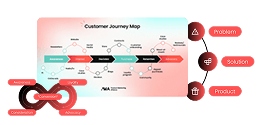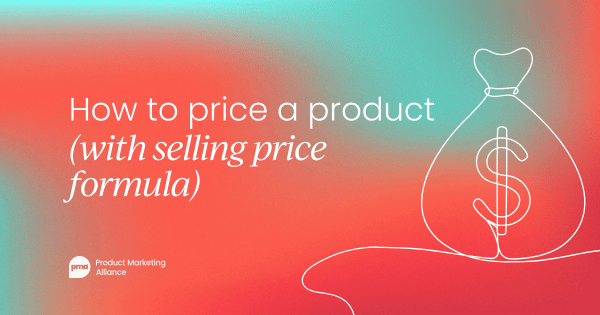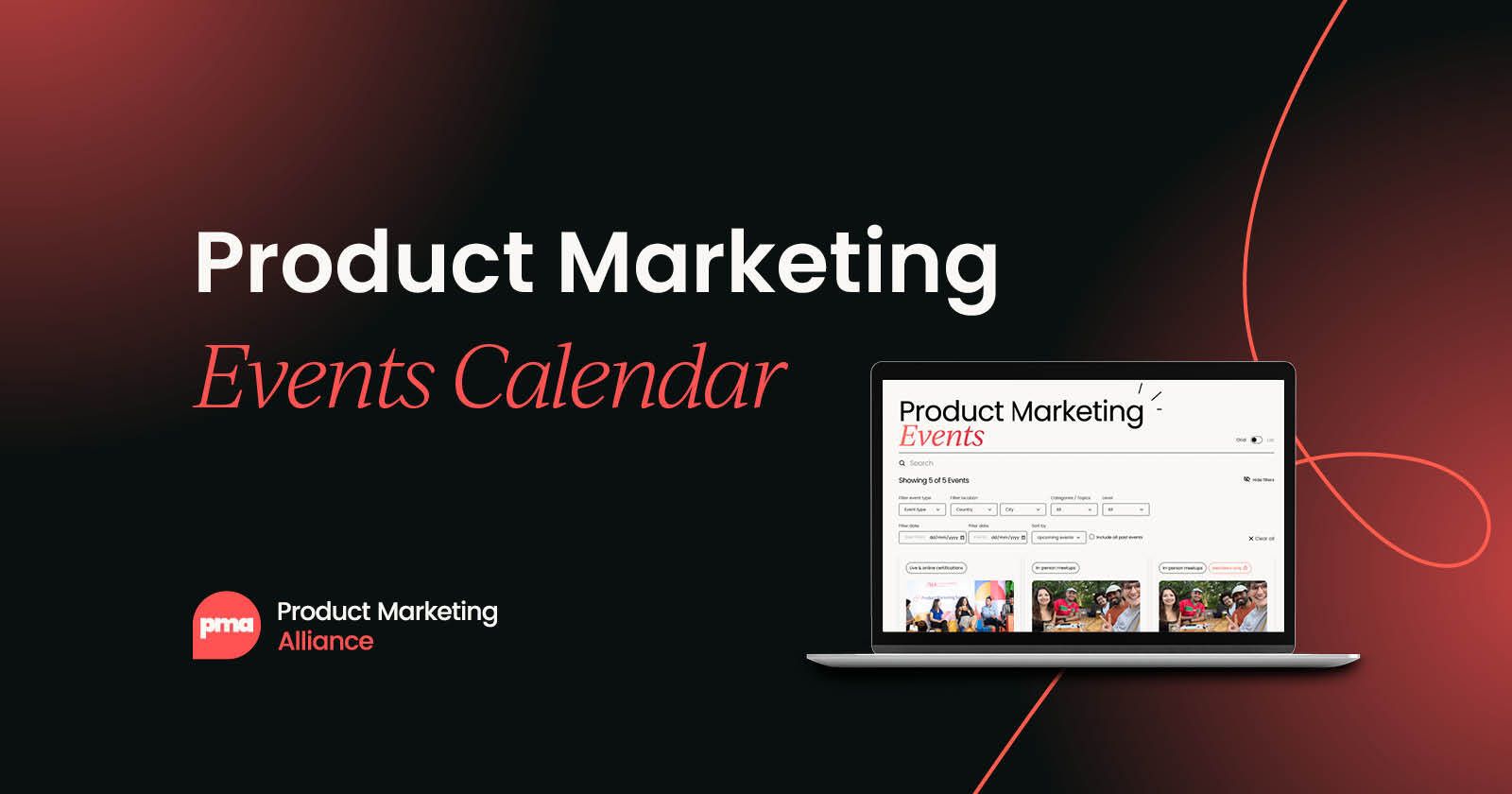Today, PMMs are increasingly expected to be strategic partners, especially in lean, fast-moving teams. We’re not just here to launch products or enable sales; we’re expected to guide product direction, shape GTM strategy, and help the business decide where to play and how to win.
That’s a big ask, and one we can’t fulfill without having a deep, constantly evolving understanding of the market.
That’s why I believe PMMs should become the voice of the market inside their company – not by owning everything, but by knowing the market best and using that insight to drive action.
In this post, I’ll share how I do that in practice. Let’s dive in.
Top market insights to pay attention to
Market insights can be overwhelming – there’s a lot of noise out there. That’s why it’s important to focus on what’s most relevant to the product and the business. Over time, I’ve honed in on three key types of insights that help me stay focused and deliver meaningful value across the company:
1. Market trends
These are the big-picture shifts shaping your industry, from macroeconomic forces to emerging technologies, and even current events or policy changes (hello, tariffs). These trends can influence customer expectations, purchasing behavior, and competitive dynamics.
But don’t just list trends – dig deeper, be specific. Consider how each trend connects to your industry, your customers, and your product. What does it actually mean for how your business should respond?
Examples I look for:
- The rise of AI tools is transforming how small businesses streamline operations
- Shifts in consumer financing behavior driven by fluctuating interest rates and tighter lending conditions
- Chatbots are reshaping how buyers research, evaluate, and interact with solutions
- Growing skepticism toward traditional marketing and increased trust in peer reviews and creator-led content
Where I find them:
- Industry reports (if you’re lucky enough to have the subscriptions)
- Industry newsletters and online magazines
- G2 and Gartner category trends
- LinkedIn thought leaders and product voices
- Podcasts
- Reddit threads and other online communities
This perspective can reveal a sharper angle and help you better connect the relevance of the news to your product, messaging, or overall business strategy.
2. Competitive landscape
I’m a bit of a competitive analysis nerd! I love putting my Sherlock Holmes hat on and digging into what competitors are up to.
It’s more than just battlecards and feature comparisons (though those are useful). What excites me is uncovering how competitors are positioning themselves, who they’re targeting, how their products are evolving, and what their customers are saying. Most importantly, it’s about finding the whitespace, how we can stand out and differentiate in a crowded, fast-moving market.
What I track:
- New product launches and positioning shifts
- Content strategy (what topics they’re posting across channels)
- Target segments and personas
- Pricing experiments (plans, trials, usage tiers, and promotions)
- Industry and customer review
Where I look (without competitive tools):
- Sales calls, especially losses (set up a competitor folder in Gong and filter keywords)
- G2, TrustRadius, Capterra, and other 3rd party online reviews
- Forrester and Gartner reports
- Competitor websites, blogs, changelogs, and product newsletters
- LinkedIn posts from their execs or PMMs
- Google Alerts (set up competitor names and relevant keywords to receive email updates when they’re mentioned online)
- SEO performance (see where you stand with website and keywords ranking compared to your competitors)
More often, you lose deals because prospects choose to do nothing and stick with the status quo. That’s the real challenge.
The key is to clearly show how your product solves the pain points of their current setup. If you can make the cost of doing nothing feel greater than the cost of switching, you’re already ahead.
3. Customer expectations
This is the heartbeat of it all. We want to understand what customers are struggling with, what excites them, and how their expectations are changing. Customer behavior shifts quickly, and how they use or perceive value from a product can evolve just as fast. That’s why we can’t rely on old assumptions; we need to stay close to the customer and continuously refresh our understanding.
What I track:
- Patterns in interviews
- Themes in support tickets
- Friction points in onboarding
- NPS open-text feedback
- Wins, losses, and churn reasons
- Use case studies and testimonials
Where I look:
- Customer interviews
- Customer Advisory Council meetings
- Gong calls
- Feedback from sales and CS teams
- Support team ticket tagging reports
- G2 and Trustpilot reviews
- CSAT/NPS survey comments
- Reddit and Facebook groups
How to turn insight into action
Now that we’ve collected the information we need, it’s time to focus on turning it into something cross-functional stakeholders can use. Here’s how I make insights digestible and actionable:
The quarterly insights report
Every quarter, I compile what I’ve been tracking into a Google Doc or Slide deck that serves as a strategic input to product planning, marketing priorities, and GTM discussions.
What’s in the report:
- Executive summary: A high-level overview of key takeaways, insights, and implications for the business.
- Marketing trends: An analysis of current market dynamics that are impacting, or likely to impact, our business,
- Competitive updates: Highlights of key moves from competitors during the quarter, including product launches, rebrands, pricing changes, and notable marketing campaigns.
- Customer insights: Emerging themes from customer feedback, including pain points, sentiment shifts, and direct quotes. Where possible, include links to relevant recordings or clips to add context.
- Strategic recommendations: Cross-functional recommendations on what the company should prioritize moving forward. These insights go beyond product marketing and may touch product, sales, customer success, and broader go-to-market strategy.
I share this with cross-functional leadership, product, sales, marketing, and customer care first to get feedback and buy-ins. Then have an office hour for everyone who wants to join and ask questions. But this usually becomes an asset that lives beyond the moment. We reference it in roadmap meetings, exec briefings, and QBR decks.
The report is typically comprehensive, but not every section will be relevant to every audience. Segment your stakeholders and customize the message accordingly.
Invite feedback to make the conversation more collaborative and to spark new ideas.

Ongoing Slack insights
While the quarterly report is great for depth, I also share insights more casually (and frequently) on Slack. Most companies should have a dedicated channel for market intel (if they don’t, it’s your opportunity to create one). I try to post one or two highlights per week to keep everyone engaged.
My formula for sharing insights in Slack:
- Headline: A one-sentence summary of the news (e.g., “Competitor X launches new AI feature”)
- Summary: Bullet points with the key details (e.g., “The feature includes 1, 2, 3”)
- Why it matters: The most important part is sharing your viewpoint. How does this impact our product or strategy? What actions would you recommend?
- Link: Include the source for context
Using collaboration to strengthen your voice of the market strategy
One of the most impactful things we can do is to make insight-sharing a two-way street. As PMMs, we don’t always have to come up with the best ideas, but we should be the best at curating them.
Set up regular syncs with sales and customer success to check in on what they’re seeing and hearing. Let reps and CSMs know their feedback and field insights are welcome and valued. This helps create a steady, reliable feedback loop.
Also, don’t forget to share wins. Publicly shout out to people who contribute valuable insight. Give credit, and you’ll build a culture where people want to share with you.
Final thoughts: Insight is our leverage
Yes, doing this kind of research and analysis takes time, time that’s often hard to find in a busy PMM role. But it’s an investment that positions you as a more strategic partner to cross-functional teams and a more valuable asset to the business.
The format, length, and cadence of how you share insights are entirely up to you, so find what works best for you and your team. At the end of the day, PMMs don’t need to own every part of the research process, but we do need to own the market point of view:
- Listen better than anyone else
- Connect dots others don’t see
- Speak in terms your stakeholders care about
- Turn patterns into priorities and actions
When we do that, we stop being “the messaging person” or “the launch machine”. We become the person who brings clarity and the one who helps the business decide what matters.
You don’t need a big team or fancy tools. You just need a system that works for you, and the confidence to keep showing up with insight that moves the needle. Let your insight be your edge, and become the partner every team counts on.


















 Follow us on LinkedIn
Follow us on LinkedIn





.svg)
Start the conversation
Become a member of Product Marketing Alliance to start commenting.
Sign up now